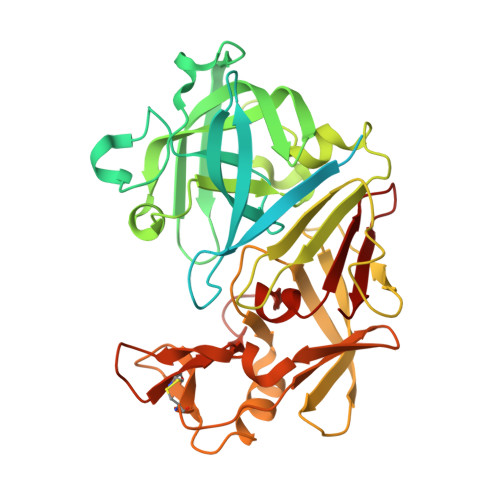Fragment Linking and Optimization of Inhibitors of the Aspartic Protease Endothiapepsin: Fragment-Based Drug Design Facilitated by Dynamic Combinatorial Chemistry.
Mondal, M., Radeva, N., Fanlo-Virgos, H., Otto, S., Klebe, G., Hirsch, A.K.(2016) Angew Chem Int Ed Engl 55: 9422-9426
- PubMed: 27400756
- DOI: https://doi.org/10.1002/anie.201603074
- Primary Citation of Related Structures:
5HCT - PubMed Abstract:
Fragment-based drug design (FBDD) affords active compounds for biological targets. While there are numerous reports on FBDD by fragment growing/optimization, fragment linking has rarely been reported. Dynamic combinatorial chemistry (DCC) has become a powerful hit-identification strategy for biological targets. We report the synergistic combination of fragment linking and DCC to identify inhibitors of the aspartic protease endothiapepsin. Based on X-ray crystal structures of endothiapepsin in complex with fragments, we designed a library of bis-acylhydrazones and used DCC to identify potent inhibitors. The most potent inhibitor exhibits an IC50 value of 54 nm, which represents a 240-fold improvement in potency compared to the parent hits. Subsequent X-ray crystallography validated the predicted binding mode, thus demonstrating the efficiency of the combination of fragment linking and DCC as a hit-identification strategy. This approach could be applied to a range of biological targets, and holds the potential to facilitate hit-to-lead optimization.
Organizational Affiliation:
Stratingh Institute for Chemistry, University of Groningen, Nijenborgh 7, 9747, AG, Groningen, The Netherlands.




















